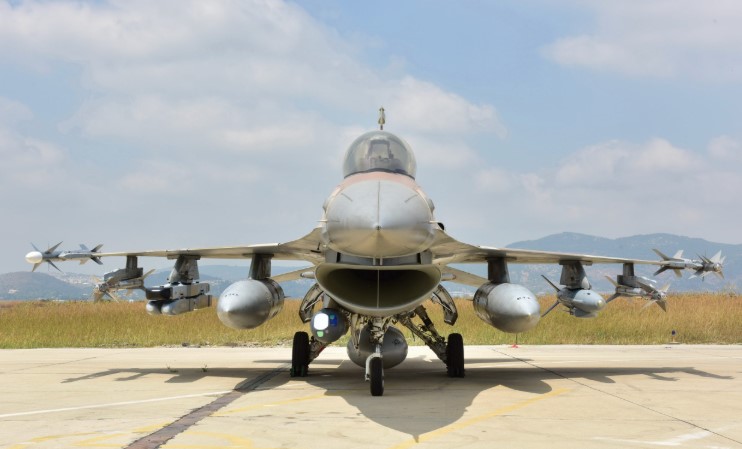The Israeli Air Force (IAF) is considering a major upgrade project worth billions of shekels for its F-16 fighter jets. These aircraft, some of which have been in service for several decades, played a significant role in recent military operations, including strikes against Iran during June’s Operation Rising Lion. The IAF is now exploring how to improve and extend the life of these aircraft to meet future combat demands while staying within budget constraints.
The Role of F-16 Jets in Recent Operations
The F-16 fighter jets have been an essential part of the IAF’s fleet for many years. Despite their age, the older F-16 models were able to fly long distances without needing refueling. This was a crucial advantage during strikes against targets in Iran, as it allowed the IAF’s tanker planes to support other combat aircraft rather than assist the F-16s.
The IAF currently operates three squadrons of older F-16 C and D models. In addition, it has about 100 newer F-16I Sufa jets. These newer jets are equipped with special fuel tanks that are attached to their bodies. These tanks, known as conformal fuel tanks, significantly extend their flight range and allow them to stay in the air longer.
War drums in the Caribbean: armed Venezuelan F-16 jets fly directly over U.S. Navy warship
Originally, these jets were designed for missions in nearby areas like Lebanon and Gaza. However, the older jets were modified at the Ramat David Air Base, where they are stationed. This modification extended their range and allowed them to fly to distant targets like Iran without needing refueling during the mission.
This is not the first time such modifications have been made. In 1981, the IAF extended the range of its early F-16 jets by switching to larger external drop tanks. This upgrade allowed the jets to carry out an attack on Iraq’s Osirak nuclear reactor.
Over the years, the jets have also received upgrades to ensure they could carry advanced weapons. One such project was called Barak 2020. However, these jets are now nearing the end of their original operational lifespan, as determined by their manufacturer, Lockheed Martin.
Financial Constraints and the Need for Upgrades
The IAF aims to maintain its combat strength and not reduce the number of aircraft in its fleet. However, buying entirely new fighter jets is expensive. Due to budget limitations, the IAF is unable to purchase additional jets beyond what has already been planned.
As a result, the IAF is exploring ways to extend the life and capability of its current jets through upgrades. This approach is not unique to Israel. Other countries operating F-16 aircraft have also chosen to upgrade their fleets instead of buying new jets.
For example, Poland signed a $3.8 billion contract with Lockheed Martin to upgrade 48 F-16 aircraft to the newer F-16V “Viper” standard. This upgrade includes advanced radar systems, new electronic warfare and communication tools, and replacement of worn-out parts. These improvements extend the aircraft’s operational life by roughly 3,000 flight hours.
The upgrade also allows jets to carry conformal fuel tanks, which were not part of the original design. This further increases the range and flexibility of the aircraft.
Poland’s decision was partly driven by security concerns due to its proximity to Russia. The country also plans to operate its upgraded jets alongside new F-35 stealth fighters. These stealth fighters have a low radar signature and can penetrate enemy defenses while providing target information to older jets.
F-16 Arrival Turns Explosive as Espionage Fears and Malfunctions Shake Bulgarian Air Base
How the F-16 Upgrade Could Work in Israel
The IAF is now studying the scope of a similar upgrade for its F-16 jets. The plan depends on both operational needs and the available budget for the project. Like Poland, where Lockheed Martin carries out the upgrade in a local facility, the IAF intends for Israel Aerospace Industries (IAI) to perform the work.
The upgrade kits required for the project would be supplied by the United States. Once they arrive, IAI would handle the installation and modification of the aircraft. This would include replacing worn structural parts, installing new radar and communication systems, and possibly adding conformal fuel tanks to extend flight range.
The upgrade would help keep the older jets flying safely and effectively. It would also allow them to operate alongside newer aircraft, providing better coordination in combat situations.
Confirmed Strike: Indian S-400 Downs PAF’s U.S.-Made F-16 Near Sargodha Air Base
This decision reflects the IAF’s efforts to ensure its aircraft remain capable of handling future missions while managing costs. By upgrading the jets, the IAF can maintain its strength and readiness without immediately investing in brand-new aircraft.

